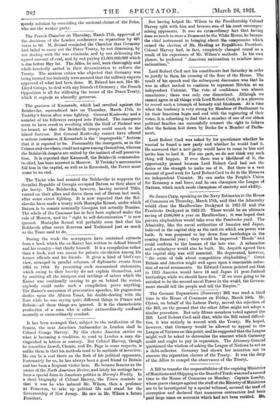The plebiscite in Upper Silesia was held on Sunday to
deter- mine the numbers of inhabitants or natives desiring to be under German or Polish rule. The Allies had at first decided to give Upper Silesia to Poland, but in June, 1919, they yielded to the German objections so far as to order a plebiscite. At the polls, 716,400 votes were cast for Germany and 471,400 for Poland. At least 200,000 German votes were those of persons, mostly children of German officials, who had been born in Upper Silesia but who do not live there. An Allied Commission has now to determine, as in the case of Schleswig, by the votes of the several communes, where the frontier between the German and Polish districts is to be drawn. The Commission has to pay regard "to the wishes of the inhabitants as shown by the vote and to the geographical and economic conditions of the locality." The southern districts and the eastern frontier districts appear to be preponderantly Polish, while the northern and western districts are mainly German. The chief mining and industrial district round Konigshtitte is divided in racial sentiment. The Commission will have no easy task in partitioning the province, but it will not, we trust, seek a
speedy solution by overriding the national claims of the Poles, who are the weaker party.



































 Previous page
Previous page